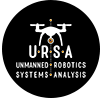In the non-DOD environment we use the term “CUAS” without any modifiers to talk about everything from airspace awareness to UAVs in Ukraine. This leads to inefficiencies and confusion when trying to discuss capabilities, pricing, use cases, and threat models.
The Navy (and presumably other branches of the military) uses well defined electronic warfare terms to categorize their CUAS solutions. (It is quite possible that DHS, DOJ, et al use a similar model. It may be telling that I’ve not encountered it in the literature or had anyone reference it when I’ve brought this topic up.) I propose a similar approach for non-military CUAS discussions. I include the relevant Navy terminology in an effort to link the two approaches.)
1) Airspace awareness – “Is there a drone in my airspace?”
2) Airspace security – “Where is the operator of the drone that is raising concerns?”
3) National security and military – “How do we track, identify, and defeat a malicious drone?”
Tier 1, airspace awareness, applies to entities that simply need to understand when drones are in the airspace and how they are operating. This can support airport operations management, transportation research and planning, and airspace utilization analysis. The systems used for this purpose should be able to apply basic radio direction finding and fingerprinting and thus avoid any of the legally difficult approaches that capture command and control traffic. (Navy: Electronic Support Measures – ESM)
Tier 2, airspace security, supports entities with a legal interest in identifying anomalous drone activity and mitigating illegal activity. In most circumstances, entities acquiring Tier 2 CUAS will be law enforcement agencies or entities such as critical infrastructure operators who work closely with law enforcement. (Navy: Electronic Support Measures and Electronic Countermeasures – ESM/ECM)
Tier 3, national security and military, covers entities with the authority to mitigate drones in flight. This is, and will likely remain, a very select group that includes national law enforcement agencies and the military. (Navy: ESM/ECM/Kinetic (Hard Kill))
Once segmented discussions (acquisitions, journalism, policy) about CUAS capabilities, use cases, and pricing should occur within a well understood frame of reference.
As noted by a LinkedIn contributor: “The Navy uses these distinctions to differentiate authorized responses in different threat severity zones.” This maps neatly to the non-DOD space and supports aligning regulations and legal authority to each tier.
And another contributor noted that this approach also supports matching use cases and threat modeling to each tier.
So, using such a standard allows us to more efficiently and accurately discuss regulatory and legal authority, threat modeling and intel, and system capabilities. This will benefit everyone involved in the CUAS ecosystem.
(With thanks to the LinkedIn community that contributed to this discussion.)
